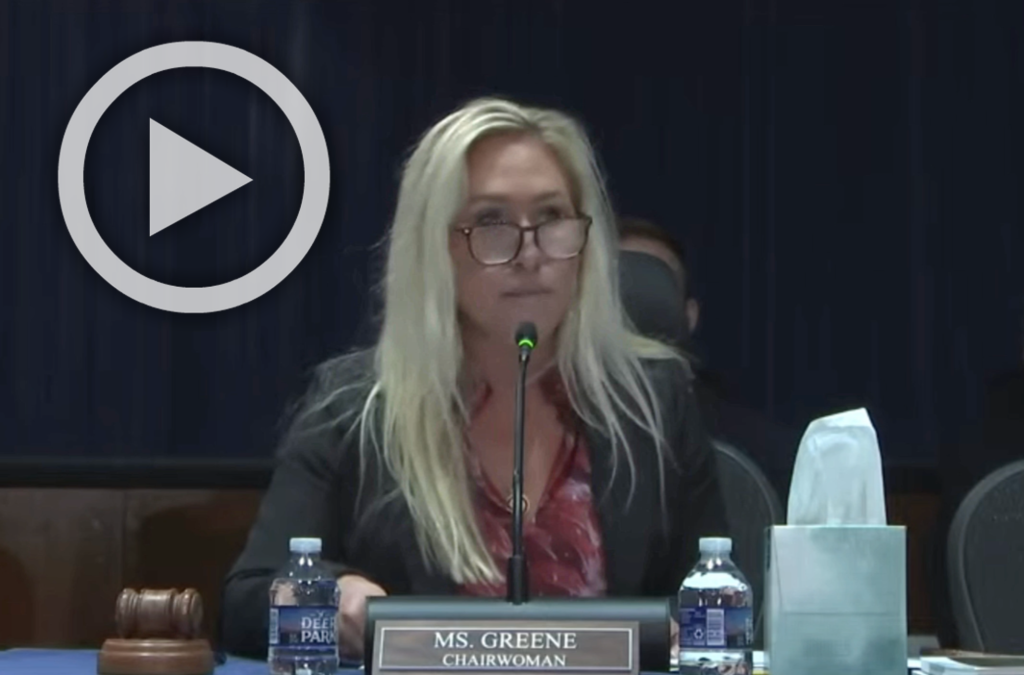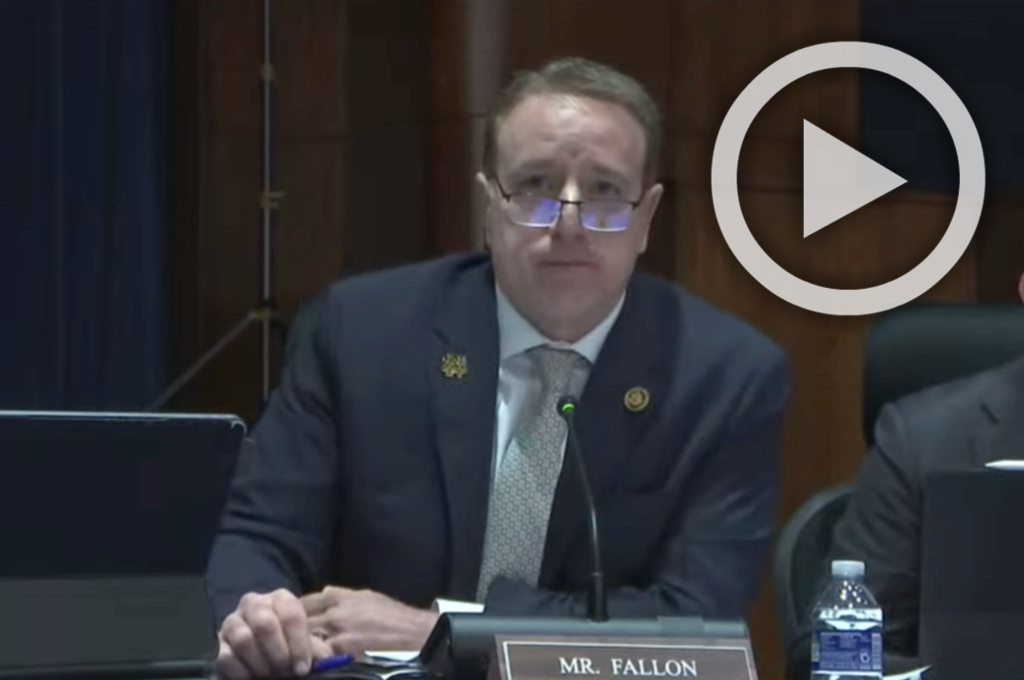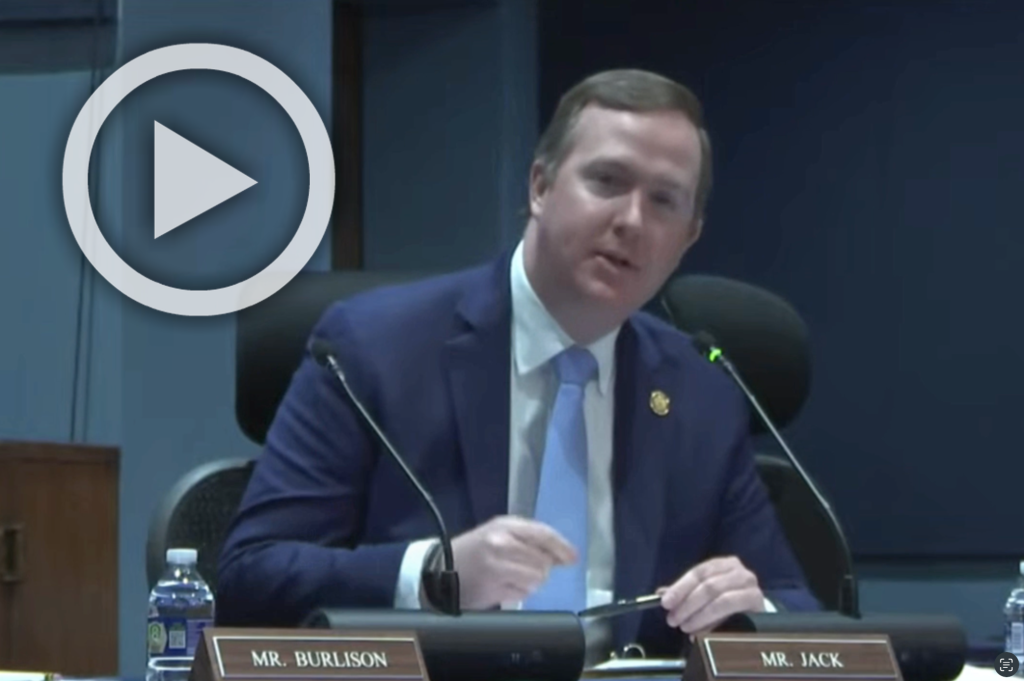
Hearing Wrap Up: DOGE Subcommittee Exposes Massive Federal Real Estate Waste, Applauds Trump Administration’s Decisive Action
WASHINGTON—Today, the Subcommittee on Delivering on Government Efficiency (DOGE) held a field hearing on “Federal Foreclosure: Reducing the Federal Real Estate Portfolio.” During the hearing, which took place at an underutilized federal building in Washington, D.C., subcommittee members exposed how the federal government is spending billions annually to furnish, operate, and maintain outdated and underutilized office buildings. Federal real property management has been on the Government Accountability Office (GAO) High-Risk List since 2003, since recent administrations have been unable or unwilling to unload unneeded federal real estate. Subcommittee members applauded the Trump Administration for bucking that trend by taking swift action to right-size the real estate footprint. Members pledged to work with the administration to ensure this momentum is sustained.
Key Takeaways:
The U.S. federal government has been an irresponsible landlord for decades, squandering tens of billions of taxpayer dollars on its real estate portfolio. Even when federal office space sat empty and unused during the Biden Administration, agencies spent billions on new office furniture.
- David Marroni—Acting Director of Physical Infrastructure at the Government Accountability Office— stated in his testimony, “According to the most recent official statistics from fiscal year 2023, the federal government owns about 420 million square feet of office space that cost nearly two billion dollars annually to occupy, operate, and maintain. For 22 years, managing federal real property has remained on GAO’s High-Risk List. Managing federal real property was first designated high risk in 2003 because of large amounts of underused property and the great difficulty in disposing of unneeded holdings […] While federal agencies have addressed many of our recommendations on key real property issues, we have 57 recommendations that have not been fully implemented related to underused property, data reliability, facility security, and building condition.”
- Subcommittee Chairwoman Marjorie Taylor Greene (R-Ga.) stated in her opening statement, “Here in DC, GAO found in 2023 that the vast majority of federal agency headquarters buildings were less than 25% occupied—some much less. Meanwhile, from 2022 to 2024, the backlog of deferred maintenance on the aging buildings the government owns grew from $216 billion to $370 billion. That’s more than one-third of a trillion dollars it will cost to restore them—if we don’t sell them.”
- John Hart—Chief Executive Officer at Open the Books—testified how the Biden Administration spent billions on lavish furniture, even as the vast majority of federal workers worked from home. “Every family can relate to the cost of furniture. That’s why taxpayers are so incensed when they learn that federal agencies are freely spending billions of dollars every year on some high-end pieces. Since fiscal year 2021, executive agencies have spent more than $4.6 billion on furniture alone. That amount could buy 9.2 million American families a modest $500 kitchen table […] During the peak years of the Covid emergency, from 2020 to 2022, agencies spent $3.3 billion on furniture even as work migrated to Zoom. The Department of Transportation was among those least-attended agencies with 9 percent occupancy but still spent $55 million on furniture. The Department of Justice was among the agencies with an average of 35 percent attendance yet still managed to spend $408 million on furniture. Meanwhile, a quote-unquote ‘refresh’ at DARPA, the Defense Advanced Research Projects Agency, came with high-end Herman Miller furniture and a $250,000 price tag.”
President Trump and his administration are taking decisive action to end this egregious waste of taxpayer dollars and right-size the federal government’s real estate portfolio. The DOGE Subcommittee will work with this administration to ensure the federal government acts as a responsible steward of taxpayer-funded real estate.
- David Marroni—Acting Director of Physical Infrastructure at the GAO—testified, “Better management of the federal government’s real property portfolio is needed to effectively dispose of underused buildings, collect reliable real property data, enhance the security of federal facilities, and improve the condition and configuration of federal buildings.”
- In February, the Trump Administration ordered the General Services Administration (GSA) to sell underutilized, nonessential federal properties to streamline government real estate holdings. In just two months of President Trump’s second term, DOGE has terminated 657 leases, saving at least $350 million.
- Subcommittee Chairwoman Marjorie Taylor Greene (R-Ga.) stated, “Federal agencies shouldn’t be maintaining empires at taxpayer expense […] Congress also acted on this front in January. We passed a law requiring federal building occupancy to be tracked, and for low-occupancy buildings to be sold. But it will take a willing partner in the White House to implement that law, and to take other steps to shrink the federal real estate empire. We now have that partner, and I look forward to working with the Trump Administration and DOGE to finally right size the federal real estate footprint.”
Member Highlights:
DOGE Subcommittee Chairwoman Marjorie Taylor Greene (R-Ga.) discussed with GAO’s expert witness how previous administrations failed to take action to dispose of underutilized federal real estate, and how President Trump and his administration are moving quickly to save taxpayer dollars.
Rep. Greene: “President Trump and DOGE ended almost 700 leases in just a few months. That’s unbelievable. Has any other administration acted so quickly to reduce the federal footprint?”
Mr. Marroni: “Not that I’m aware of.”
Rep. Greene also pointed out how the Biden Administration wasted billions on office furnishings during the COVID pandemic when federal offices sat empty.
Rep. Greene: “In 2021, the CDC spent almost a quarter million dollars on solar powered picnic tables. The CDC, at the time, was telling people to socially distance with masks and basically forcing a vaccine that many Americans didn’t want. So, what use would its employees have for this new picnic table that has quite the price tag?”
Mr. Hart: “It’s quite expensive, and the social distancing guidelines at the time suggest that they shouldn’t be seated at that table […] They’re quite close. There’s a close proximity of the seats.”
Rep. Greene: “Is $238,000 spent on solar powered picnic tables at the CDC appropriate? I think the American people think that’s disgusting.”
Rep. Pat Fallon (R-Texas) criticized the Biden Administration for lavish spending on new office furniture and asked the Democrats’ witness whether such expenditures were a good use of taxpayer dollars.
Rep. Fallon: “The U.S. Centers for Disease Control and Prevention, as that Madam Chair pointed out, spent $230,000 on solar picnic tables. Is that a good use of government funds Mr. Kendall?”
Mr. Kendall: “I have no opinion. I don’t know.”
Rep. Brian Jack (R-Ga.) spoke with GAO’s expert witness about the underutilization of federal buildings and how the federal government could save money by reducing underutilized property.
Rep. Jack: “Could you walk us through GAO’s survey where 24 agencies were surveyed, and just how much underutilization is there?”
Mr. Marroni: “Well, in 2023 when we did that, there was significant underutilization of headquarters buildings. None of the agencies were using more than half of their office space in the D.C. area for headquarters, and about 17 to 24 were using less than quarter.”
Rep. Jack: “And in your assessment, how much taxpayer money could have been saved had the federal government begun right-sizing its property portfolio shortly after the pandemic shifts to telework became apparent?”
Mr. Marroni: “So certainly you get substantial savings. It’s about $8 billion a year on owned and leased office space.”
CLICK HERE to watch the hearing.
Distribution channels: U.S. Politics
Legal Disclaimer:
EIN Presswire provides this news content "as is" without warranty of any kind. We do not accept any responsibility or liability for the accuracy, content, images, videos, licenses, completeness, legality, or reliability of the information contained in this article. If you have any complaints or copyright issues related to this article, kindly contact the author above.
Submit your press release


